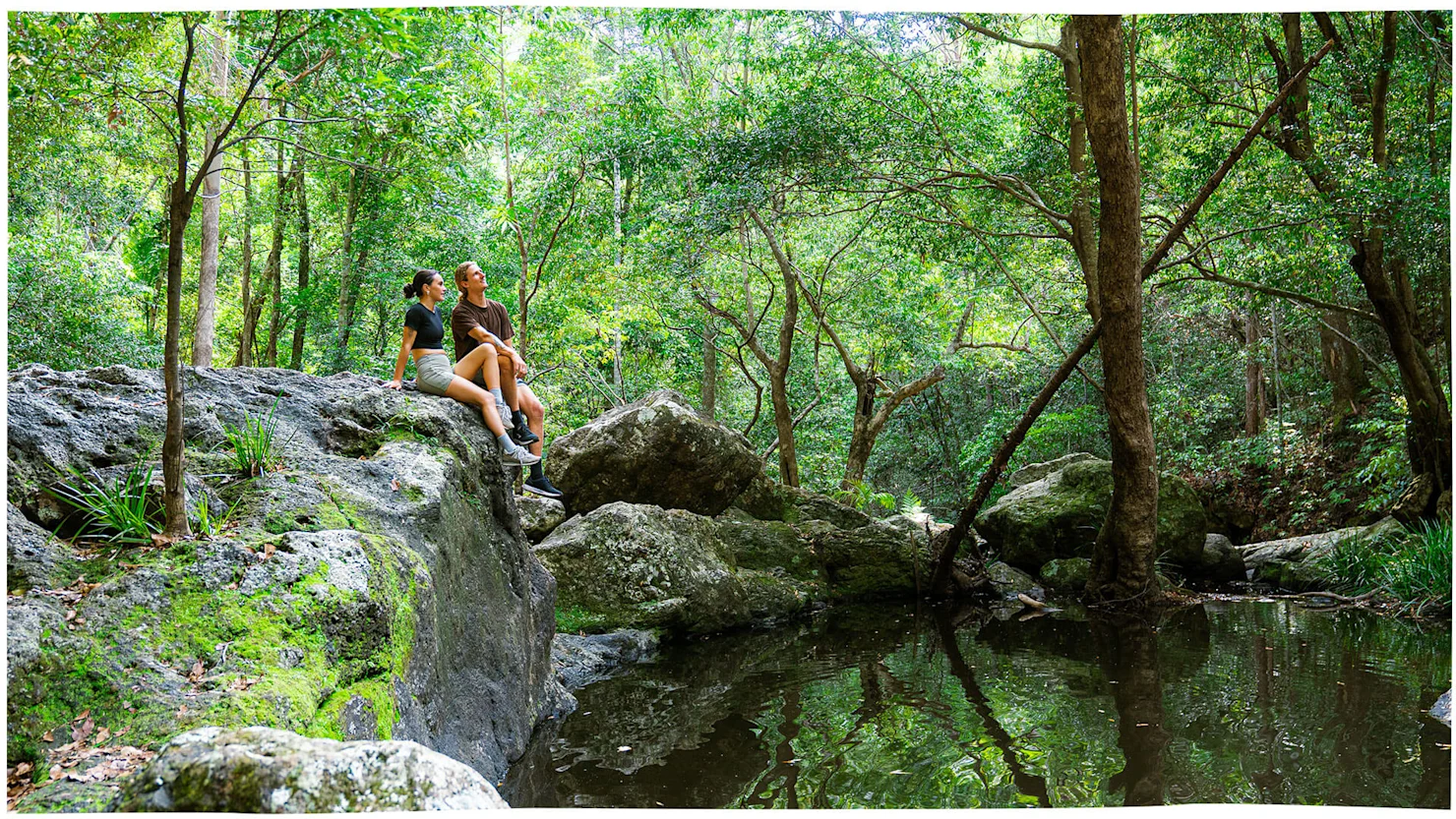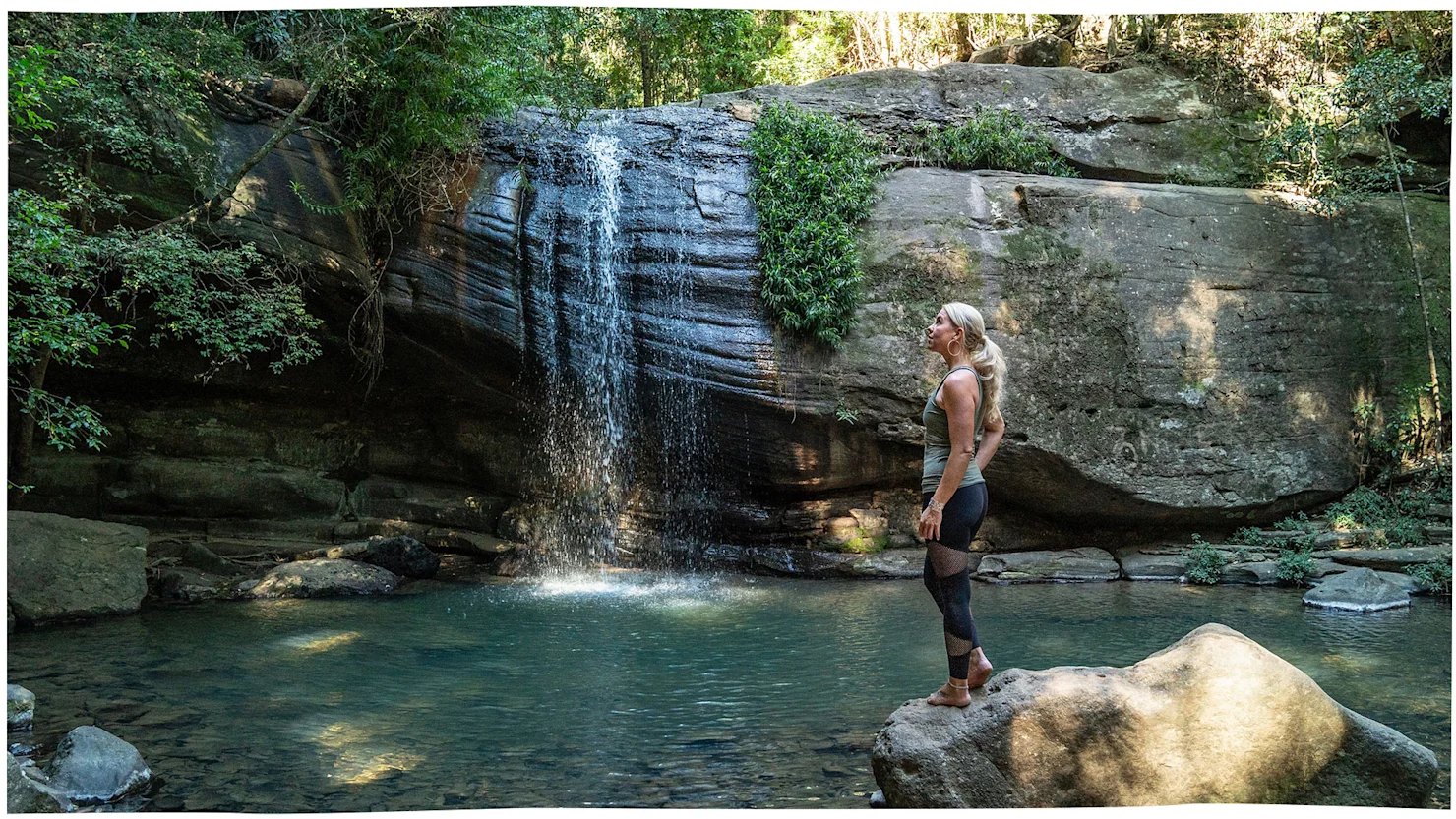After some digging, we quickly found out that with our pristine coastline and history filled hinterland, the Sunshine Coast is the perfect place for forest bathing, or forest therapy.
So, what is it? We asked Jay Ridgewell from the Association of Nature and Forest Therapy to give us the low-down on what it’s all about.
Jay is a certified nature therapy guide and through her business Held Outside offers guided nature therapy tours on the Sunshine Coast, making her the perfect person to step us through the wonderful world of Forest Bathing.
Here we sat down with Jay to ask her all our burning questions, and we guarantee learning about forest bathing is going to change the way you connect with nature.
What is Forest Bathing?

Mapleton National Park - Gheerulla Falls
Forest Bathing, nature bathing or nature therapy, is the practice of slowing down and immersing your senses to deepen your relationship with nature.
You might find yourself sitting watching the trees sway in the breeze, listening to bird songs and cicadas, exploring the feeling of different barks and mosses under your fingertips or using your imagination to visit the forest deep in time.
Indigenous cultures rely, respect and celebrate nature in ways that all of our ancestors did once, but our modern culture has lost this. Forest bathing is an accessible way to remember how to do that in our own respectful ways; remembering that we are part of the Earth.
How is it different to simply going for a walk or spending time in nature?
When you’re intentionally spending time in the forest to be with the forest, not to get to the top of a mountain, catch up with a friend, or get your steps up, it’s different! Rather than getting caught up in your to-do list or endless comparisons, your attention can be on deepening that relationship with nature.
Many people grew up with a favourite tree or animal, and forest bathing helps us come back to find those playful and reverential relationships with nature.
What are some of the benefits?

Conondale National Park
We know intuitively that being ‘in nature’ is good for us, and the research in medicine, psychology and public health is backing that up! Spending time in nature and forest bathing has been shown to be good for our immune and cardiovascular systems, our metabolism and stress regulation as well as our mental health.
When we feel safe and supported (e.g. wearing sun, insect and weather protection and being with a guide or someone we trust), we are able to take in the forest through our senses, and this favours our parasympathetic nervous system.
Who is Forest Bathing for? Can anyone do it?
Forest bathing and nature therapy is for everyone, young and old! Once we choose to really connect with the natural world, we can tap into the physical and mental healing that being in nature offers us. Some kids and seniors seem more likely to just do it naturally, but it takes extra effort for teenagers and working adults to slow down.
I have a scientist friend who would never do something like this, but I asked him to come and try it. Afterwards, he said “This was a really nice and calming day, … I noticed things about the world and myself that I hadn't noticed before”.
Have you found that interest in Forest Bathing is increasing?

Buderim Forest Waterfalls (Serenity Falls), Buderim
The term Forest Bathing is a translation from the Japanese Shinrin Yoku which started as a joint Forestry and Health departments government initiative in the 1980s. It’s quite common in Japan, Korea and Taiwan where there are now dedicated Forest Bathing forests, retreats and school camps. There is a growing interest here in Australia, with the number of guides and programs here increasing in the last 5 years.
Tell us a little about the Forest Bathing experience you hold, what can people expect?
On a walk with me, you’ll learn about the forest’s history and landscape, we acknowledge country and get introduced to the group. Then we move into getting to know the forest through our own senses through various activities. It can be quiet and peaceful, playful and social. We finish with a little picnic and tea ritual.
How can people incorporate Forest Bathing into their everyday life?
The key is remembering that you are part of the Earth, and noticing nature wherever you are. Right now, you can stop, slow down and notice the air you’re breathing and the ground you’re standing on. Then in your mind, choose a spot outside you like, maybe under a tree, or with a view of the sky, and go and sit there for 15 minutes, unplugged. You’ll be surprised at what you notice!

By Visit Sunshine Coast
Published 8 days ago








